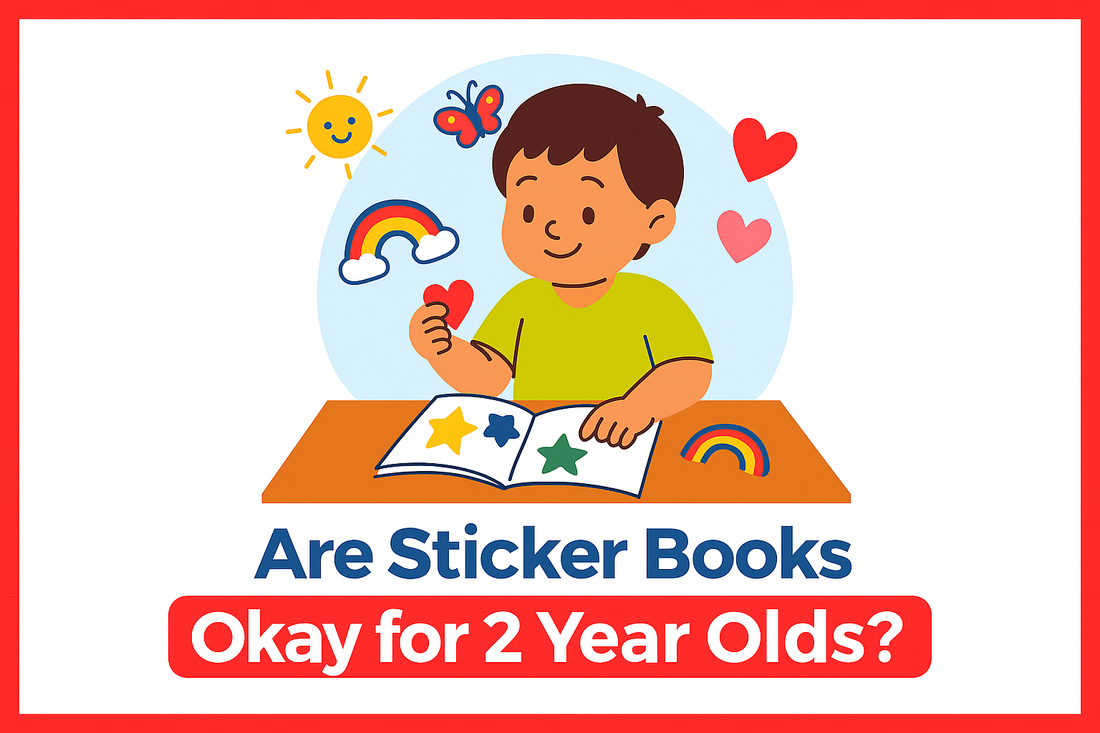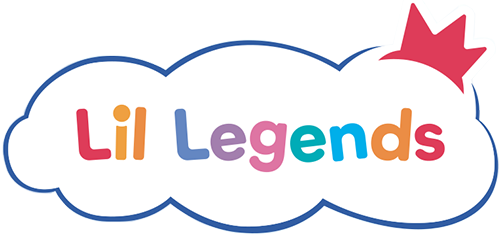
Are Sticker Books Okay for 2 Year Olds?
Share
As parents, we constantly find ways to creatively engage children in activities that also support their learning. Around the age of 2, children actively seek new experiences; in the process, their developing motor-and-cognitive skills adapt. Are sticker books good for a 2-year-old? Well, yes—they can be super fun when chosen appropriately. They are also safe and advantageous toward early learning.
This blog will discuss whether sticker activities are suitable for toddlers, their pros and cons, safety issues, selection tips, and how to raise creative children at home.
Why Parents Consider Sticker Books for Toddlers
Sticker book activities are easy yet spellbinding for preschoolers. At age 2, peeling and sticking is more than playing; it is a little challenge that helps build skills. Parents often observe that toddlers:
• Love to explore textures and shapes.
• Prefer interactive over passive activities.
• Can concentrate briefly on colorful and engaging tasks.
Therefore, for the moment, sticker activities seem ideal. But are all options good and safe for young children? Let's check it out!
Benefits of Sticker Books for 2 Year Olds
1. Develops fine motor skills
Many children are beginning to peel stickers and put them on the surface. Having small stickers to peel offers strength to their fingers and training on their coordination. That helps in dexterity, which will help in writing, buttoning clothes, and handling smaller objects later on.
2. Develops hand-eye coordination
Putting a sticker onto a certain page or surface requires the utmost precision. The child is practicing to align what the eyes see with what the hands do: This is the first training for the many daily functions.
3. Enhances concentration
Sticker play keeps toddlers engaged but importantly, for a meaningful amount of time. For a 2-year-old, even 5-10 minutes of focus on one activity is an improvement.
4. Stimulates Creativity
Different themes in sticker books—animals, vehicles, food, or shapes—help stimulate a child's imagination. Toddlers start connecting images with stories, which is an early form of creative thinking.
5. Early learning opportunities
Some stickers show letters, numbers, or objects. You can use these moments to reinforce vocabulary and recognition.
Are sticker books safe for two-year-olds?
Safety comes above everything for any parent. While sticker play carries many advantages, it has some necessary precautions:
-
The size of stickers: Make sure they're not tiny so as to prevent choking hazards.
-
Material Quality: The materials must be nontoxic and BPA-free and be child-safe.
-
Durability: The more sturdy the pages and the bigger they are, the easier they are for toddlers.
If chosen with care, sticker activities can provide a safe learning environment.
Choosing the Right Sticker Books for 2 Year Olds
Not every option will be appropriate for a toddler. Parents should consider the following:
• Large Stickers: Easier for little hands to peel and safer to handle.
• Reusable Stickers: Can be played with repeatedly and reduce frustration if stickers are not positioned correctly.
• Bright and Simple Illustrations: Too much detail may confuse a toddler.
• Thematic Options: Animal types, shapes, and everyday objects are relevant.
• Durable Pages: The thick pages of a board book are better than paper that's thin.
For instance, a sticker book especially for toddlers will often favor bigger images, safe adhesives, and engaging themes. Some brands further provide surfaces that can be wiped clean to use again.
A Comparison: Toddler-Appropriate Sticker Books vs. Older Kids' Sticker Books
Here's a review in tabular form to highlight the difference
|
Feature |
Toddler (2 Year Old) Sticker Books |
Older Kids’ Sticker Books |
|---|---|---|
|
Sticker Size |
Large, easy to peel |
Small, detailed designs |
|
Material |
Non-toxic, durable, reusable |
Standard paper quality |
|
Themes |
Animals, shapes, colors |
Fantasy, characters, puzzles |
|
Page Type |
Thick board pages |
Thin paper or activity sheets |
|
Play Style |
Simple sticking and matching |
Creative scenes, puzzles |
This comparison shows why not all sticker activities are equal. For 2-year-olds, simplicity and safety come first.
How to Use Sticker Books with Your 2 Year Old
Here are a few ideas to make the most of this activity:
-
Story Time with Stickers: Create mini-stories as your toddler adds stickers to the page.
-
Learning with Fun: Use stickers of animals, fruits, or vehicles to teach names and sounds.
-
Praise and Encourage: Celebrate small successes like peeling a sticker independently.
-
Mix with Other Activities: Pair sticker time with drawing, coloring, or reading.
When used creatively, books sticker play becomes more than just sticking shapes—it turns into a bonding and learning moment.
Common Concerns Parents Have
1. Will Stickers Ruin My Walls or Furniture?
Most toddler-friendly options are reusable and designed not to leave residue. Always check the packaging before purchase.
2. Can Toddlers Get Frustrated?
Yes, sometimes peeling stickers can feel tricky. Choosing larger stickers helps reduce frustration and encourages independence.
3. Are There Alternatives?
Yes, magnetic boards, Velcro books, or foam shapes provide similar engagement while avoiding adhesive stickers.
Conclusion
So, are sticker books okay for 2 year olds? The answer is a clear yes, provided they are chosen carefully. At this age, toddlers benefit from activities that engage their hands, minds, and imaginations. A book sticker book designed for toddlers can spark creativity, improve fine motor skills, and offer a safe, enjoyable way to learn.
As a parent, your role is to supervise, encourage, and select the right options. By doing so, sticker activities can become more than just a fun pastime—they can be stepping stones in your child’s early learning journey.
FAQs About Sticker Books for 2 Year Olds
Q1. Can I give my 2-year-old any sticker book?
Not all are safe. Choose ones specifically designed for toddlers with larger stickers and non-toxic materials.
Q2. How long should a 2-year-old play with stickers?
Short sessions of 5–15 minutes are ideal. Extended play may cause restlessness.
Q3. Are reusable stickers better for toddlers?
Yes, reusable stickers reduce waste and allow children to play repeatedly without frustration.
Q4. How do I know if a book is age-appropriate?
Look for age labels on the packaging and check the sticker size and theme.
Q5. Can sticker activities support early learning?
Absolutely! They help with vocabulary, shape recognition, and creativity while improving motor skills.


